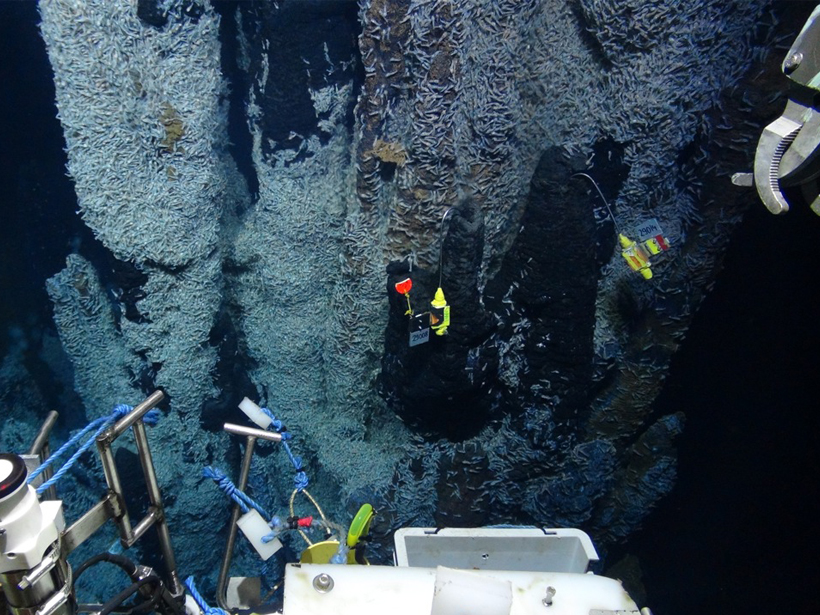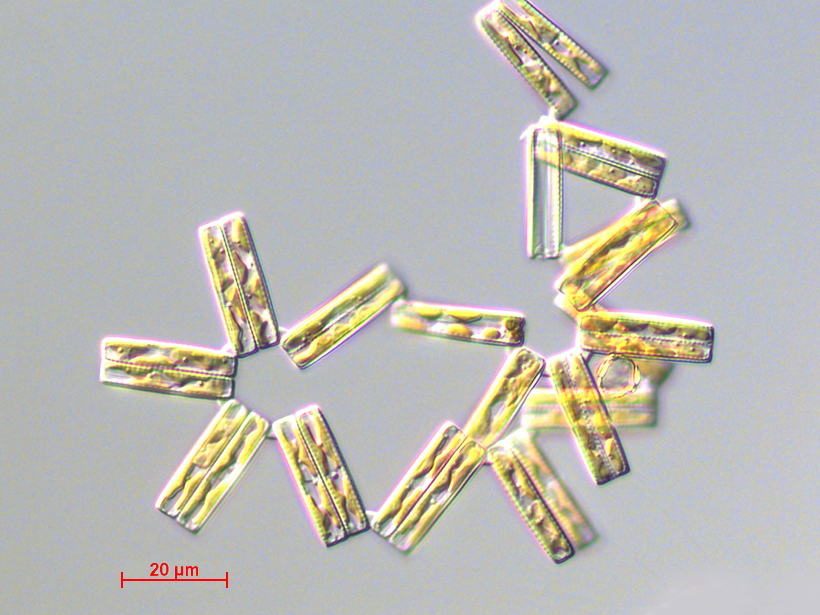Fumio Inagaki was awarded the 2015 Asahiko Taira International Scientific Ocean Drilling Research Prize at the American Geophysical Union (AGU) Fall Meeting Honors Ceremony, held on 16 December 2015 in San Francisco, Calif. The Taira Prize is a partnership between AGU and the Japan Geoscience Union (JpGU), and is made possible through a generous donation from the Integrated Ocean Drilling Program Management International (IOPD-MI). The prize honors an individual for "outstanding transdisciplinary research accomplishment in ocean drilling."
Oceans
New Technology and Teamwork to Tackle Ocean Color Radiometry
International Ocean Colour Science Meeting; San Francisco, California, 15–18 June 2015
Novel Vents Built from Talc Found Far from Mid-Ocean Rift
Researchers discovered the first new variety of hydrothermal vents in a decade—a finding that may give clues to how oceanic crust cools.
Using Sounds from the Ocean to Measure Winds in the Stratosphere
Stratospheric winds deflect acoustic waves from the oceans. With the right data and the math to analyze them, these waves tell us about the weather aloft.
Russ E. Davis Receives 2015 Maurice Ewing Medal
Russ E. Davis was awarded the 2015 Maurice Ewing Medal at the American Geophysical Union Fall Meeting Honors Ceremony, held on 16 December 2015 in San Francisco, Calif. The medal is for "significant contributions to the ocean sciences."
Plankton Reveal New Secrets About Ancient CO2 Levels
An analysis of phytoplankton shells doubles previous estimates of the amount of carbon dioxide in the atmosphere 11 million years ago.
Scientific Ocean Drilling Charts a New Course
The International Ocean Discovery Program plans drilling expeditions for 2016 and 2017 while increasing efficiencies in ship scheduling and operations.
Autonomous Undersea Technologies to Vie for New XPRIZE
The competition aims at improved health and understanding of Earth's oceans by spurring teams to devise better robotic technologies for seafloor mapping and exploration.
Next-Generation Scientists Get a Taste of Their Future Careers
High school and middle school students mingled with scientists from all over the world when they presented their posters at the Joint Aquatic Sciences Meeting.
UAE-Oman Mountains Give Clues to Oceanic Crust and Mantle Rocks
When oceanic plates meet continental plates, the continental plates usually come out on top. Cases where this is reversed provide valuable access to oceanic crust and mantle materials.








